Maps of late-medieval Chester
Using the GIS data, a series of themed maps of late-medieval Chester were drawn-up by Keith Lilley and Gill Alexander of Queen’s University Belfast. The maps are free to download, and with appropriate citation may be used in publications and presentations.
-
-
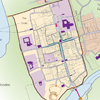
-
Chester, c.1500, shows the topography of the late-medieval city, covering both the intra-mural and extra-mural built-up areas, and including streets, rows, plot-patterns, religious buildings and precincts, city walls and gates, and parish boundaries. Pdf format
-
-
-
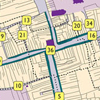
-
Chester Streets, c.1500, identifies the names of the streets, lanes and roads in the city and its suburbs as they were known in the later Middle Ages (based upon entries in the English Place-Name Society volume for Chester). Pdf format
-
-
-
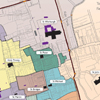
-
Chester Parishes, c.1500, focuses on the intra-mural city and indicates the areal extents of its parishes and the locations of parish churches, so presenting an interesting view of Chester’s parochial geography as it was at around the time of the Reformation, with some parishes having large extra-mural areas, and others having detached portions, or outliers. Pdf format
-
-
-
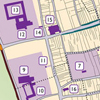
-
Ecclesiastical Chester, c.1500, focuses on the religious buildings and precincts of the city, including its monastic foundations, parish churches, chapels, and hospitals. Within the walled city, the monastic precincts share relatively marginal locations, particularly the friaries and nunnery on the western side. Pdf format
-
-
-

-
Secular Chester, c.1500, shows those features of the city that belonged to the activities of Chester’s overlords, the Earls of Chester, particularly the Norman castle, situated in the south-west corner of the city, just within the walls, and the city-walls themselves, the circuit of which was enlarged under the earls in the mid-twelfth century. Pdf format
-
-
-
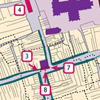
-
Civic Chester, c.1500, indicates the principal buildings and structures that represented the government of late-medieval Chester and its officials, notably The Pentice, situated adjacent to St Peter’s Church, and the market hall, in Northgate Street. The Gallows lay outside the walled city, forewarning would-be wrongdoers on the main approach road from London. Pdf format
-
-
-
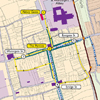
-
Ritual Chester, c.1500, maps out the route of the city’s Corpus Christi procession and the suggested route of the Whitsun Plays (and the sites of its stations), both being important civic and religious occasions in Chester’s ritual calendar, and each taking different courses; one linear, one circular. Pdf format
-